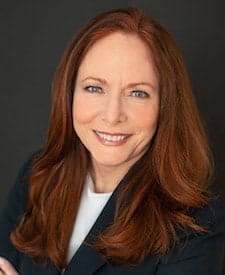
By Pamela J. Gallagher
With increased calls for healthcare pricing transparency from consumers and government entities alike, hospitals’ chargemasters are moving from proprietary information to public knowledge. However, putting chargemasters under the microscope has not led to the clarity that patients are seeking regarding quality care at a price they can afford.
Nearly two-thirds of physician respondents in a 2019 NEJM Catalyst survey said that patients do not have enough information to affect the cost of their own healthcare–related decisions, and more than three-quarters of respondents say that assessing the total cost of care is extremely challenging for patients.
Rather than increasing understanding and empowering the consumer, hospitals’ efforts to be open with their charges have highlighted a fundamental misunderstanding between hospitals and payers, and the patients they serve: the definitions of the terms “charges,” “payments,” and “costs.”
A difference in terms
In public discussion of healthcare costs, these terms are used interchangeably, but in fact have completely different meanings to hospitals and insurers. A “charge” is the price listing internally for the hospital and the starting place for negotiations with insurance companies.
It is almost never the amount that an insured patient is billed—hospitals in the U.S. billed an average of 3-1/2 times what they received in payments for all of the services they provided in 2015, according to True Cost of Healthcare. The term “charge” is just the sticker price. While hospitals are getting better at reducing the actual cost of care-to-charge ratio, it isn’t reimbursed that way by insurance companies, which will be prohibitive in moves toward reducing the “charge” amount.
To add to the complexity, each healthcare organization sets these charges differently. There’s not much commonality from hospital to hospital, making it very difficult to compare the cost of care using the amount of the “charge.”
The term “cost,” to a hospital, means cost of providing a service to a patient. But perspective affects this term, as a “cost” to a hospital is a patient’s “payment.” When the government calls for reducing the “cost” of healthcare or “payments” of the patient, hospitals hear reducing revenue.
Charges and the consumer’s bottom line
So then, how valuable is posting a hospital’s listing of charges to the consumer? How relevant is it to the patient’s bottom line of receiving quality care at an affordable price? Even attempts at upfront pricing estimates don’t give the full picture. For example, a clinic may tell a patient that a screening for a mole is x amount of dollars, but what if there’s an abnormal result? This could lead to the removal of a mole, invasive surgery, or even chemotherapy. It is very hard to predict price when you can’t predict outcomes.
The healthcare industry is beginning to realize the importance of educating patients on the differences between charges and costs and empowering them to understand the medical bills they receive. Ultimately this will allow consumers to make more informed decisions regarding the cost of their care.
I believe that it is essential for patients to have an in-depth understanding of how their insurance policy works. Because insurance drives the flow of healthcare costs, the patient’s insurance policy will have a much greater impact on the amount due that appears on their bill than a hospital’s chargemaster.
While hospitals’ charges are currently in the spotlight, they aren’t the be-all-end-all when it comes to empowering consumers to make informed decisions about the cost of their care, and reducing the cost of quality healthcare to the consumer. It’s just not that simple.
The requirement for hospitals to publish a list of their standard charges should, at the very least, motivate hospitals to review and update their charges. The increased visibility of chargemasters is an opportunity for hospitals to serve their patients by driving discussion that can contribute to understanding some of the complexities of charging in healthcare.
About Pamela J. Gallagher
Pamela J. Gallagher is a senior healthcare finance executive with 20 years of experience balancing the reality of finance with the delivery of excellent patient care. As a consultant she instills financial discipline, streamlines processes to maximize revenue, and reduces expenses for immediate improvements and long-term results. She writes on healthcare, finance, and technology at gallaghersresulting.com.
The Editorial Team at Healthcare Business Today is made up of skilled healthcare writers and experts, led by our managing editor, Daniel Casciato, who has over 25 years of experience in healthcare writing. Since 1998, we have produced compelling and informative content for numerous publications, establishing ourselves as a trusted resource for health and wellness information. We offer readers access to fresh health, medicine, science, and technology developments and the latest in patient news, emphasizing how these developments affect our lives.








